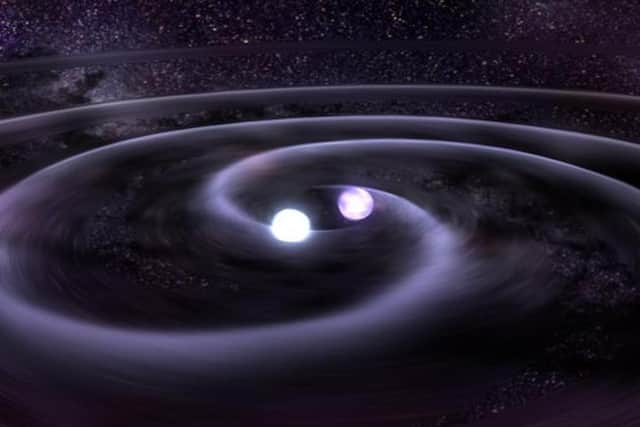Cosmic hum: astronomers detect bass notes in deep space in a major breakthrough
and live on Freeview channel 276
In a new major breakthrough, researchers have detected the first hints of a new class of gravitational waves from the early universe.
The observations of the cosmic hum are thought to be produced by the slow-motion mergers of supermassive black holes across the universe. They will offer the first direct glimpse of the giant black holes more than 10 billion light-years from Earth.
Advertisement
Hide AdAdvertisement
Hide AdSupermassive black holes are millions to billions times the mass of the sun, and have an important role in shaping galaxies - but remain a mystery as no light can escape their orbit.


The study was published in The Astrophysical Journal Letters and is the product of years of hard work by hundreds of scientists using radio telescopes in North America, Europe, China, India and Australia.
Dr Michael Keith, a lecturer at Jodrell Bank Centre for Astrophysics and a member of the European team that provided independent evidence for the signal, said: “The results presented today mark the beginning of a new journey into the universe to unveil some of its unsolved mysteries.
“We are incredibly excited that after decades of work by hundreds of astronomers and physicists around the world, we are finally seeing the signature of gravitational waves from the distant universe.”
Advertisement
Hide AdAdvertisement
Hide AdUntil now, scientists have only captured short "chirps" of gravitational waves linked to mergers of black holes or neutron stars slightly larger than the sun.
Gravitational waves were first predicted by Albert Einstein over a century ago, as ripples in the fabric of the universe that travel through everything at the speed of light almost unimpeded.
However, their existence was not confirmed until 2016 breakthrough by the Laser Interferometer Gravitational-Wave Observatory (Ligo).
The latest observation tune into a deeper frequency range, where a single wave takes 30 years to pass by Earth.
Advertisement
Hide AdAdvertisement
Hide Ad“We think each pair contributes a little wave, which is added to a little wave of another, and all together that is what we may see right now – a sort of murmur of the entire population,” said Prof Alberto Vecchio of the University of Birmingham and a member of the European Pulsar Timing Array (EPTA).
How was the cosmic hum found?
Astronomers found the waves by monitoring over 100 pulsars. These stars, which spin hundreds of times each second, are so stable that any small change in timing can be picked up.
In 2020, armed with 12 years of data, Nanograv scientists began to see hints of this gravitational hum, and reached out to separate teams in Europe, India, China and Australia, who each agreed to use their own data to provide independent results.
“This is huge news,” said Dr Stephen Taylor, chair of the North American Nanohertz Observatory for Gravitational Waves (Nanograv) consortium, which led the discovery, and an astrophysicist at Vanderbilt University in Nashville.
Advertisement
Hide AdAdvertisement
Hide AdThere is some uncertainty about the source of the gravitational waves as supermassive black hole death spirals are viewed as “the most plausible explanation”. However, Taylor said alternative possibilities remain including a gravitational mark left on the universe shortly after the big bang.
Comment Guidelines
National World encourages reader discussion on our stories. User feedback, insights and back-and-forth exchanges add a rich layer of context to reporting. Please review our Community Guidelines before commenting.
